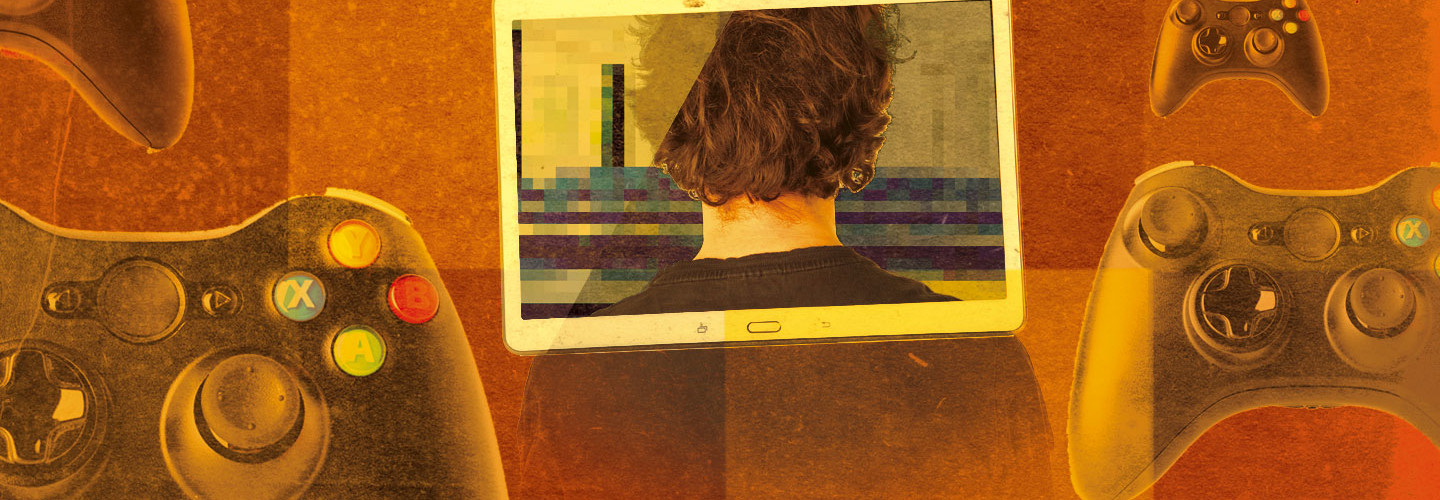Game-Based Learning Thrives, Despite Report of its Decline
Last year, third graders in Bennington (Neb.) Public Schools used Microsoft’s Minecraft video game to create and explore what life is like in three different types of model communities — urban, suburban and rural.
The project showcased the research skills and ingenuity of the students and demonstrated the power of game-based learning, says Jason Schmidt, instructional technologist for the K–12 district with four schools serving 2,000 students.
“Games like Minecraft, and predecessors like SimCity and Portal 2, are here to stay,” Schmidt says. “These games and game-related techniques help us do what good teachers have been doing for a long time, which is to stimulate interest, engagement, collaboration and critical thinking.”
Percentage of K–12 teachers who say they use games and simulations to aid learning in their classrooms
SOURCE: University of Phoenix College of Education, National University of Phoenix Teacher Survey, May 2015
Schmidt is one K–12 educator unfazed by the disappearance of games and gamification from the New Media Consortium’s 2015 Horizon Report on technology trends in education. For several years, game-based learning had been included in the report, most recently pegged as two to three years from mainstream acceptance. This year, however, NMC’s panel of experts decided adoption of games and game-based learning has stalled, NMC Executive Director Larry Johnson says. The panel saw little evidence of a growing market for, or development of, learning games or that game theory was being included in instructional design courses in teacher training programs.
“The people who are enthusiastic about games and gamification are very enthusiastic, and some of the things I’ve seen that they’re doing are very exciting,” Johnson says. “It’s not that game-based learning isn’t important or cool, it’s that it isn’t close to mainstream adoption.”
The Content at the Heart of Gaming
Game-based learning and gamification in schools continues to evolve, says Michael Barnett, professor at the Lynch School of Education at Boston College. Game-based learning is, fundamentally, an approach to motivation.
“A game like Minecraft works because kids like to build stuff, they like to problem-solve, they like to take ownership of their learning, and they like the freedom to play and to fail and correct their mistakes,” he says. “The games arerich learning environments.”
According to Barnett, as gamification matures, that basic step of motivating students becomes more intrinsic to the content of the game. A well-designed game capitalizes on what is interesting in the subject and helps students master it to solve a puzzle or a problem.
“Gamification in the past has meant the kids did something to get a reward,” he says. “It’s slowly evolving to answer the question of how you design a game where what’s fun is the content, not the reward. Find out what excites kids and build it into the heart of the game.”
Learning Together with Games is Better
Kristi Druvenga started using game-based digital learning tools five years ago in her third-grade classroom. Now the K–5 instructional coach for the Oelwein (Iowa) Community School District, she helps teachers add game-based learning and gamification to their pedagogical toolboxes.
“Games can be effective in any subject if the teacher has the right tools and the right strategy,” says Druvenga, whose district serves 1,300 students in five schools. “I have not run into a single student who was not motivated by a game-based technology project.”
Percentage of teens ages 13 to 17 who play video games on a computer, game console or portable device
SOURCE: Pew Research Center, “Teens, Technology and Friendships,” August 2015
Oelwein teachers use Minecraft for complex projects that often tie many aspects of the curriculum together. They also use game-based software targeting specific subjects, such as Lexia, which the district selected to help students build reading skills. Among the criteria for choosing game-based tools are the quality of their graphics, ease of using the software, how well activities engage students and teachers, and if the games motivate students at all skill levels.
Druvenga believes the best games can also help create a learning community, where the flow of insight and information goes in all directions.
“Kids learn better when they get a chance to learn from their peers, and to work with teachers rather than just listening to them. Environments like Minecraft encourage that,” she says. “We take some projects to the wider community, posting a video on YouTube or on the district Facebook page.”
Combining Experience and Academics
For Norman Alston, the founder and CEO of the eMODE Learning Foundation, which runs math programs held after school, on weekends and during vacation periods for Seattle-area students, games and gamification are all about staking a claim on young hearts and minds.
“Most of our students are fifth and sixth graders,” he says. “We need to get them to love mathematics in elementary school, a time when kids are interested in games and novelty.”
According to Alston, eMODE classes use games of all sorts, ranging from Minecraft to racing Hot Wheels cars to Fit for Math, which combines games, exercise and math in the gym. The program looks for games that inspire students to become actively engaged in discovering and exploring how math works, with an emphasis on problem solving. “We want games that are both academically and experientially rich.”
Alston envisions the rapid growth of game-based learning on technology platforms.
“If anything, the number of teachers using these approaches is going to explode,” he says. “The use of technology in education is certainly not going to wane, and gaming is embedded in the way young people are used to engaging with technology.”







